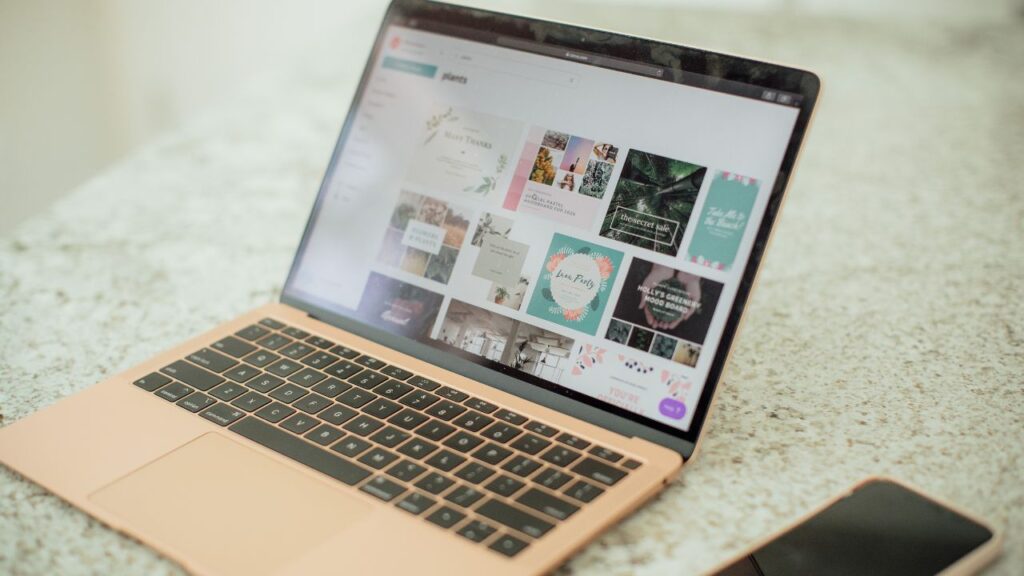How to Check Laptop Specs in Kenya -Even If You’re Not Techy
Wondering how to check laptop specs in Kenya fast and easy? The quickest way is to open the System Information or Settings > About section on your Windows laptop. You’ll instantly see your processor type, RAM size, storage, and Windows version.
That’s it. Boom. Specs revealed. But here’s the catch just seeing numbers doesn’t mean you understand what they mean. And sellers? They know that. That’s why many buyers in Kenya get tricked into paying premium prices for outdated, refurbished, or underpowered laptops.
Like buying a “Core i7” only to realize it’s a 4th gen potato. That’s why this guide exists. To show you exactly how to check laptop specs in Kenya, decode them like a pro, and avoid the tech version of “nduthi marketing.”
You’ll learn:
1.Where to find real specs (not the sticker lies)
2.What RAM, CPU, storage specs actually mean
3.What’s upgradable, and what’s not
4.Which free tools to use (even for hidden info)
5. And how to spot fake or tampered laptops before you buy
Let’s break it all down step by step. Even if you’ve never touched the BIOS or heard of “GHz” in your life, you’re about to be spec-literate.
What’s the Easiest Way to Check Laptop Specs on Windows?
Let’s be honest if you’re trying to figure out what your laptop is packing under the hood, you don’t want to download weird software or become an IT guru just to see whether you’ve got 8GB RAM or a struggling potato chip CPU. And if you’re in Kenya, chances are you’re either:
a) trying to confirm if the machine you bought from Facebook Marketplace or a local shop matches what they promised…
or
b) figuring out if you can upgrade what you already have instead of spending big bucks on a new one.
So here’s the fast, no-hustle guide to checking laptop specs on any Windows laptop: no extra software, no stress. Just built-in tools and a little keyboard magic.
Method 1: Use the “System Information” Tool To Check Laptop Specs
This one’s for people who want everything. Like the full name, age, shoe size of your laptop. You get to see:
a. Processor speed and brand (Intel i5? AMD Ryzen?)
b. Installed RAM
c. Whether your system is 64-bit or 32-bit
d. The actual model number (so no one lies to you)
How to do it:
1. Press Windows Key +R
2. Type msinfo32
3. Hit Enter Boom! Specs everywhere.
This is perfect when you’re about to sell your laptop online or trying to figure out if your current specs match what the repair guy said he installed. Spoiler alert: sometimes they don’t.
Method 2: Check Laptop Specs via Settings > About (The Basic Check)
If you just want the highlights like what processor you’ve got and how much RAM is installed this is the chill method.
Steps:
1. Click Start > Settings > System > About
2. Scroll to Device Specifications
3. There it is: your processor, RAM, Windows version, and device name
This one’s especially helpful for students or anyone checking if their laptop can run something like Zoom, Adobe Illustrator, or a light editing program.
Method 3: Open Task Manager To Check Laptop Specs
Wanna see your laptop work live, like how much it’s struggling to keep up with 18 Chrome tabs open? Use Task Manager.
Steps:
1. Press CTRL + Shift + ESC
2. Go to the Performance tab
Here you can see:
1. CPU usage and model
2. Total and used RAM
3. Disk performance
4. Even your GPU (graphics card)
This method slaps when you’re trying to figure out: “Why’s my laptop hot like Kikopey nyama choma?”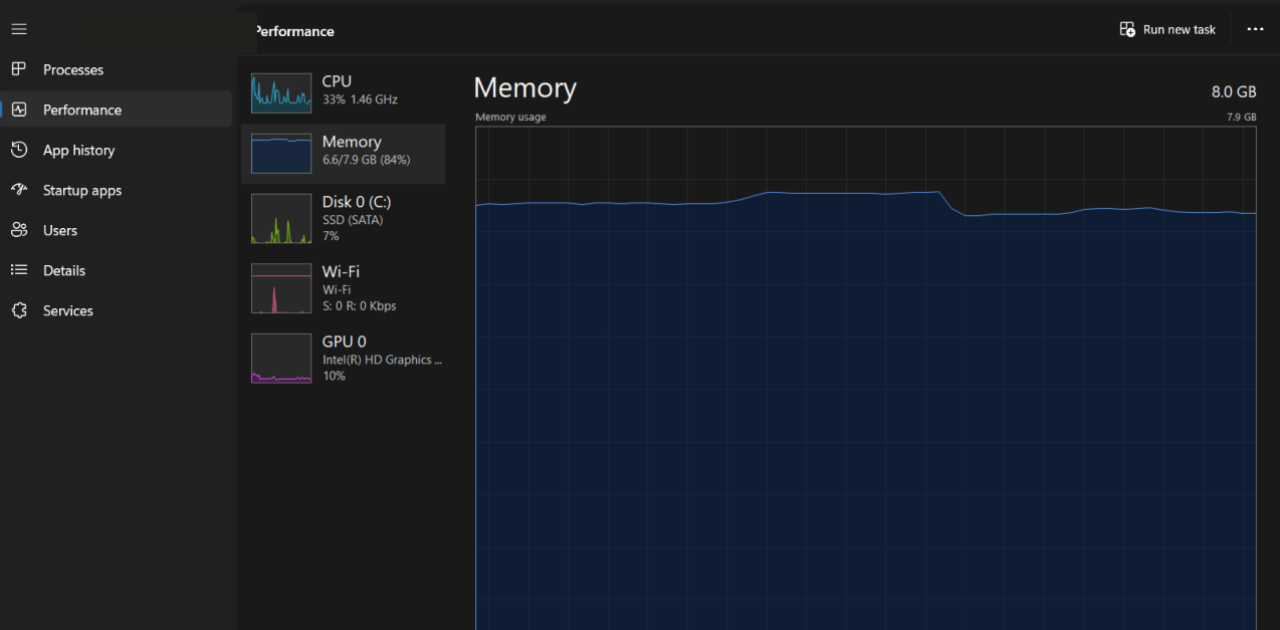
Quick Advice: Always double-check your laptop specs to get what you were promised. If you bought a “Core i7” but your system info says “Pentium Inside,” my friend you’ve been finessed. Always verify specs against what’s printed on the receipt, online listing, or the box (if you’re lucky to get one).And hey if you realize your current specs are trash and upgrades won’t help, you don’t need to guess what to buy next. We’ve already done the homework in this guide on securing the best laptops in Kenya for 2025.
Isn’t There an Easier Way to Check My Laptop Specs Automatically?
Let’s say you just bought a second-hand laptop from a Nairobi CBD shop or online deal on Jiji. It looked fresh. Keyboard lights? Check. Thin and sleek? Check. But now you’re home, and you want to confirm you didn’t just buy a pretty toaster.
Sure, you could go digging through settings. Or… you could run a tool that checks everything for you like magic.
Let’s break down the best free tools people
1. Speccy (For Windows – Light and Easy)
You’ll see this name pop up everywhere. Speccy is like a snitch from Hogwarts it tells you EVERYTHING.
CPU, RAM, Storage, Motherboard, GPU, Temperature.
Why use it? It’s super visual. You open it and in seconds, it lays your laptop bare like:
“You have a Core i5-10210U” “8GB DDR4 RAM” “SSD: 256GB”
It’s also perfect for older machines or refurbished laptops where model numbers don’t match what the shop said.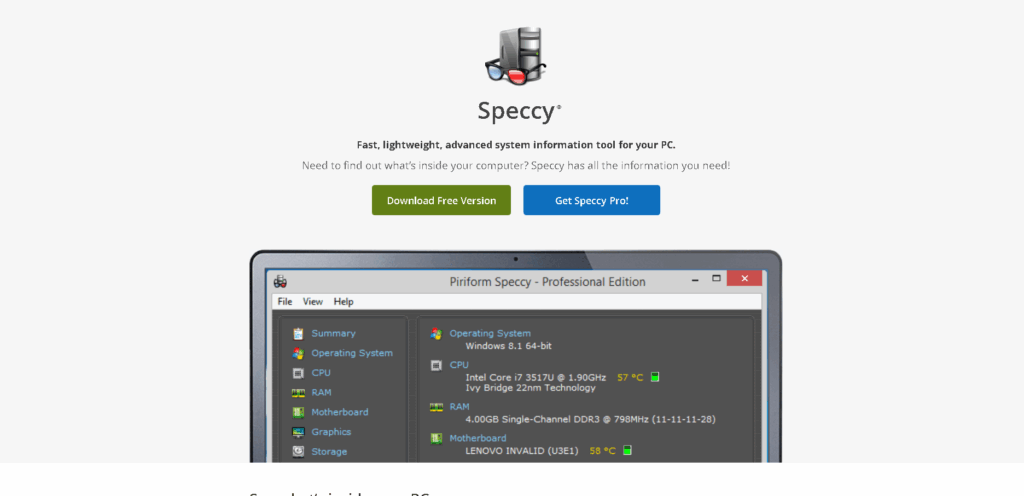
2. CPU-Z (For the Nerdy Details)
Reddit geeks love this one. It’s deeper than Speccy. It breaks down your CPU, RAM speed, cache levels, and more. Ideal for people upgrading or buying a laptop for gaming/video editing and want precise info.
Want to know if your RAM is single or dual channel? CPU-Z has you.
Trying to verify if your laptop is actually using an SSD or hybrid storage? Yep.
Bonus: It’s tiny, doesn’t slow down the system.
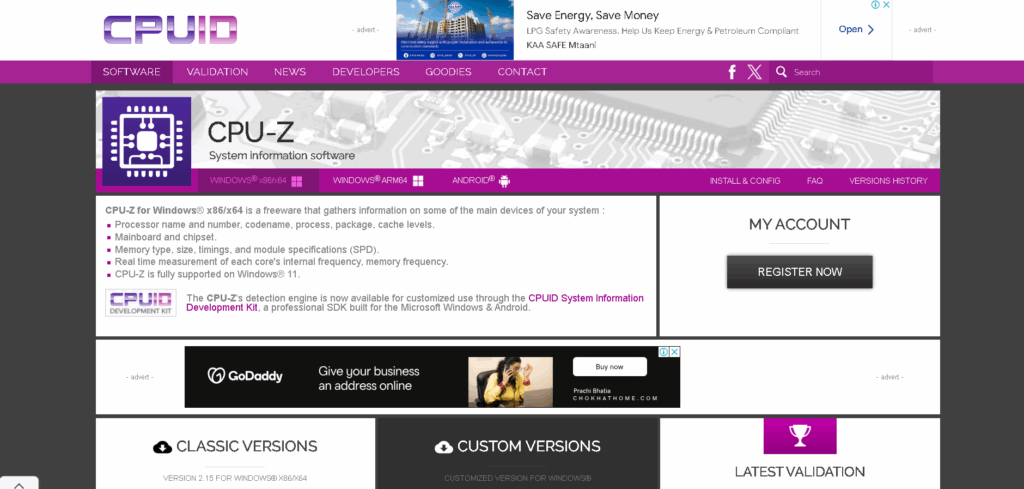
3. Windows Built-In Tools (No Downloads)
Sometimes, basic works. If you’re scared of downloading anything, do this:
Click Start Menu → Type “System Information”
OR: Press Win + R, type dxdiag, and hit Enter
This tells you your processor, RAM, system model, and more.
It’s not sexy, but it’s native and safe.
4. Online Serial Number Lookups
Got a laptop but don’t know what model it really is?
Use your serial number (S/N) found underneath the laptop, then head to the brand’s official site:
This is especially useful for laptops with wiped OS or refurbished devices where system info is incomplete.
Pro Tip from online users is that If you’re dealing with a suspiciously cheap laptop, this is how you verify its exact model and year.
5. CrystalDiskInfo (For Storage Health)
This one’s perfect if you’re wondering: “Is this second-hand laptop going to die next week?” It checks your SSD/HDD health status, temperature, and usage count. A smart extra step if you’re buying used or refurbished. You don’t need to be an I.T. guru to get real info from your laptop. These tools are used by actual Kenyans (yes, even mtaani) to check what they really got before it’s too late.
Which Specs Matter for Which Type of User?
Ever stared at a list of laptop specs and felt like you were decoding a NASA blueprint? Yeah, you’re not alone. But here’s the cheat code not all specs matter equally to everyone. Whether you’re just trying to keep your Zoom meetings from freezing or you’re editing a 4K video on Premiere Pro, your ideal laptop specs depend on you.
Let’s break it down Nairobi-style.
Laptop Specs For Students and Casual Browsers
You need reliability, battery life, and something that won’t lag when 20 tabs are open while streaming music and working on assignments.
Recommended Specs:
– RAM: 8GB
– Processor: Intel i3 or Ryzen 3 (11th Gen or newer)
– Storage: 256GB SSD (don’t do HDD unless you love pain)
– Battery Life: At least 6 hours
– Extras: Lightweight, decent webcam
For a full breakdown, check our [2025 Student Laptop Picks in Kenya].
Laptop Specs For Graphic Designers and Creators
You’re dealing with large files, multi-layered projects, and creative software like Photoshop, Illustrator, or Canva Pro.
Recommended Specs:
-RAM: 16GB minimum
-Processor: Intel i5/i7 or Ryzen 5/7
– Graphics Card: Dedicated GPU (NVIDIA GTX 1650 or higher)
– Storage: 512GB SSD or more
– Display: Full HD IPS, color-accurate screen
Pro tip from Reddit: Many creatives in Kenya recommend second-hand MacBooks with M1 chips for long-term value. If you’re team Windows, stick with ASUS VivoBooks or HP Envy lines.
For Remote Workers and Online Entrepreneurs
You’re switching between Google Docs, Zoom, Trello, and 30 tabs of research all before your second cup of tea.
Recommended Specs:
-RAM: 8GB to 16GB
– Processor: i5 or Ryzen 5
-Storage: 512GB SSD
-Battery: 7–10 hours
-Webcam & Mic: Decent quality (external webcams are lifesavers)
Real Talk from Quora: Remote workers in Kenya often struggle with cheap laptops overheating or lagging during video calls. Prioritize cooling and RAM.
For Gamers (Budget and Hardcore)
You want zero lag, crispy graphics, and cooling systems that don’t scream like a jet engine.
Minimum Specs (Budget):
-RAM: 8GB
-Processor: Ryzen 5 or Intel i5
-GPU: GTX 1650
-Storage: 512GB SSD
Recommended for Serious Gaming:
-RAM: 16GB and above seriously
-Processor: Ryzen 7 or Intel i7
-GPU: RTX 3060 or higher
-Display: 144Hz refresh rate
From Reddit: Many Kenyan gamers suggest avoiding laptops with shared graphics if you want real FPS gains. And yes, your charger will live in the socket.
What Do These Laptop Specs Actually Mean? (Spec Decoder)
Look, checking your laptop specs is easy. But understanding them? That’s the part that trips people up. All those numbers and acronyms? They’re not just for show they tell the whole story of what your laptop can (and can’t) do.
Let’s break down the most common spec terms so next time you see them, you nod like a pro instead of Googling “what is RAM again?”
RAM (Random Access Memory)
What it means:
This is your laptop’s short-term memory — the stuff it holds while you’re actively working on it.
Why it matters:
More RAM = smoother multitasking. Less RAM = your laptop freezes when you have Gmail, Spotify, Chrome, and Canva open at once.
How much is enough:
4GB → only if you’re a monk who only opens one tab at a time.
8GB → standard for students and remote workers.
16GB → for designers, video editors, and gamers.
Many users in Kenya complain their laptops “hang” or “jam” most times, it’s low RAM or too many background apps. Don’t skimp here get RAM good enough for your needs.
Processor (CPU)
What it means:
The brain of the operation. Determines how fast your laptop thinks and reacts.
Common names: Intel Core i3, i5, i7 or AMD Ryzen 3, 5, 7.
Quick decoder:
Core i3 / Ryzen 3 → Basic browsing and docs
Core i5 / Ryzen 5 → Multitasking and light editing
Core i7 / Ryzen 7 → Serious performance: design, dev, gaming
A lot of users ask if a Core i3 can handle “work stuff.” Answer? It depends on which generation and what “work” really means. Always look at generation numbers; newer gens often beat older higher-end models.
Storage (SSD vs HDD)
What it means:
Where your files live but also, how fast they open.
HDD: Old-school, slow, cheap, bulky.
SSD: Fast, reliable, cool. Costs more but worth every shilling.
Tip:
Always pick SSD over HDD, even if it’s smaller. Speed makes a bigger difference than space.
Graphics Card (GPU)
What it means:
Handles visuals, video editing, gaming, and design rendering.
Integrated Graphics: Built into the CPU. Good for Netflix and Canva.
Dedicated Graphics (e.g., NVIDIA GTX, RTX): Needed for video editing, gaming, 3D work.
Kenyan gamers and editors often debate between laptops with NVIDIA GTX 1650 and RTX 3060. Reality? It depends on what you’re doing. Casual creators don’t need to overkill their budget.
Battery Life
What it means:
How long your laptop stays on when unplugged. Often inflated in ads check real-world reviews.
General guidelines:
4–5 hours → Bare minimum
6–8 hours → Decent for students or remote work
10+ hours → Premium endurance (MacBooks shine here)
A lot of Kenyan laptop buyers feel cheated when advertised battery life doesn’t match reality. Rule of thumb: expect 70% of what’s claimed.
How To Check Laptop Specs (Step-by-Step Walkthrough)
So you’re staring at a laptop and wondering… “Can this thing really handle my workload, or is it just pretending?” Here’s how to get the full story fast.
A. If You’re Already Using the Laptop (Windows)
Most Kenyans use Windows laptops especially for school or work so let’s start here.
Quick Overview
1. Use the “About” section:
-Click the Start Menu → type “About”
-Select “About your PC”
-Boom. See your processor, RAM, system type (32-bit or 64-bit)
2. For detailed specs:
-Hit Windows Key + R → Type dxdiag → Press Enter
-A full DirectX Diagnostic Tool opens
-Get info on your GPU, audio, display, etc.
Most users checking if their laptop can run games or edit videos rely on dxdiag. It’s way more honest than what sales reps say.
Bonus Tool: System Information
Hit Windows Key +R again
Type msinfo32 → Press Enter
Access a library of hardware details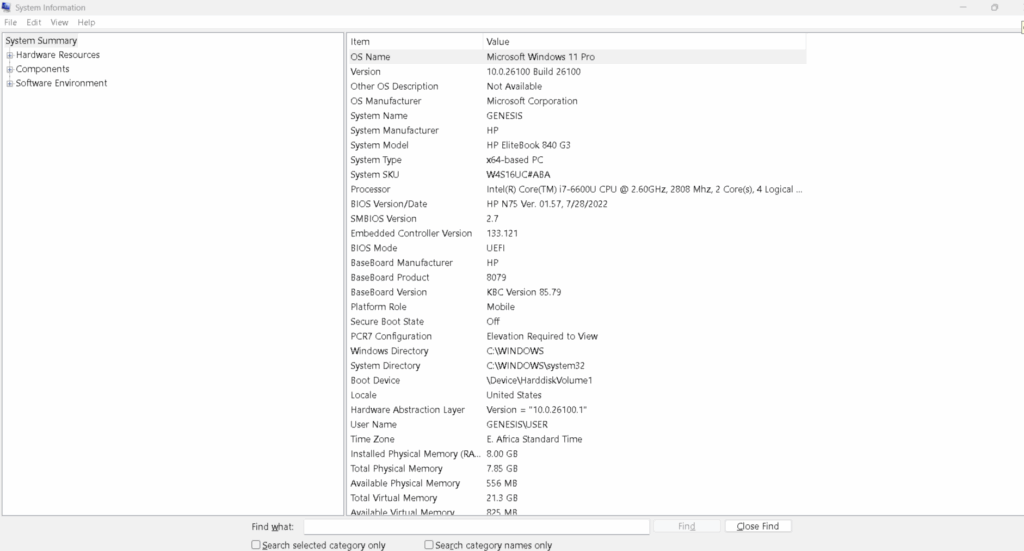
B. If You’re Using a MacBook
MacOS is clean — but hidden info sometimes.
Steps to Check:
-Click the Apple logo () top left → “About This Mac”
-Get CPU, RAM, macOS version, and graphics chip
Want more? Click System Report → Dive into storage, display, power, etc.
C. If You’re Buying Secondhand
This is where most scams happen. Someone wipes a laptop clean, slaps a shiny case on it, and boom overpriced junk.
Here’s how to protect yourself:
1. Boot up the laptop (don’t skip this)
2. Run the steps above
3. Open Task Manager → Performance Tab
Shows live CPU, memory, SSD activity
Great for spotting fake or dying hardware
4. Check battery health (Windows only):
Open Command Prompt as admin
Type: powercfg / batteryreport
Press Enter
A report saves to your system showing wear level. Many secondhand buyers in Nairobi report battery life dying after 2 weeks. This test tells the truth before you pay. Use it.
What Do Good Laptop Specs Look Like for Your Use Case?
You’ve checked the specs but now you’re wondering: “Are these any good, or am I holding onto a potato?”
Let’s break it down based on what you actually do with your laptop. Whether you’re editing videos, typing documents, or just binging Netflix, here’s how to know what’s good… for you.
1. For Students & Casual Users (School, Netflix, Notes)
Must-Have Specs:
-Processor: Intel Core i3 / AMD Ryzen 3
-RAM: Minimum 4GB (8GB is way better)
-Storage: 256GB SSD (HDD is a no-no unless you’re broke broke)
-Battery Life: 6+ hours
Why it works: You’re mostly browsing, typing, or doing light school tasks. SSD keeps things fast. RAM helps with multitasking (e.g., Zoom + Chrome). An online user says,” My old HP with HDD took 10 mins to boot. Upgraded to SSD now it feels like new.”
2. For Office & Remote Workers (Excel, Zoom, Chrome Tabs Chaos)
Must-Have Specs:
-Processor: Intel Core i5 / Ryzen 5
-RAM: 8GB minimum
-Storage: 256GB–512GB SSD
-Display: Full HD (1920×1080) is a must
-Extras: Webcam, decent mic, solid keyboard
Why it matters: You’re juggling meetings, spreadsheets, and browser tabs. RAM and SSD = smooth multitasking. Avoid Celeron unless you like pain.
3. For Creatives & Content Creators (Photoshop, Video Editing, etc.)
Must-Have Specs:
-Processor: Intel Core i7 / Ryzen 7
-RAM: 16GB+
-Storage: 512GB+ SSD (or external drive)
-Graphics: Dedicated GPU (e.g., NVIDIA GTX/RTX)
-Display: IPS panel, high color accuracy (at least 1080p)
Kenyan creators often overlook the GPU then wonder why Adobe Premiere lags like a matatu stuck in traffic.
4. For Gamers (You Know Who You Are)
Must-Have Specs:
-Processor: Intel Core i5/i7 or Ryzen 5/7 (Latest Gen)
-RAM: 16GB minimum
-Storage: SSD 512GB+ (games are huge)
-Graphics: NVIDIA GTX 1660 / RTX 3060 and above
-Refresh Rate: 120Hz+ (if you’re serious)
Always check the TDP of the GPU in laptops some budget models have underpowered variants with the same name.
Pro Trick:
Use a spec comparison site like versus.com or notebookcheck.net to compare laptop models side by side.
Mistakes to Avoid When Checking Laptop Specs in Kenya
You’ve probably heard the phrase: “The devil is in the details.” Well the Kenyan laptop market has plenty of those devils. Let’s roast the biggest traps people fall into and show readers how to sidestep them like pros.
1. Judging a Laptop by Its Looks (Or Brand Name Alone)
You see that sleek silver HP… or that shiny new MacBook Air clone going for a “crazy deal.”
Reality check: Specs first, aesthetics second. You’re not buying a handbag this thing needs to work.
An online user had this to say: “Bought a laptop because it looked new… turns out it had 2GB RAM and Windows 7.”
Always look past the brand. Even HP and Dell sell low-end models with weak specs (hello Celeron ).
2. Confusing HDD for SSD
This one’s a silent killer. Many sellers don’t clearly state the type of storage — just “500GB” or “1TB.” Most times, it’s a dusty old HDD. You’ll hate your life.
SSD = Fast boot-up, fast app launch, overall better experience
HDD = Lags like a bad Safaricom connection
3. Ignoring Processor Generation
You saw “Core i5” and thought you were winning…But it’s a 6th gen from 2016 .The generation matters just as much as the “Core” level.
Newer gens = better power efficiency, better performance.
Look for:
Intel: 10th gen and above
AMD: Ryzen 3rd gen and above
Don’t buy a 4th gen Core i7 thinking it is great and struggle with Chrome tabs.
4. Overpaying for Outdated Tech in Kenya
The used market is full of overpriced laptops with old CPUs, tiny RAM, and no SSD.
It hurts because you’re paying KSh 30K+ for something worth half that and it won’t keep up with today’s apps.
-Compare Kenyan prices to global specs
-Ask for benchmarks (Google: “i5-6200U vs i5-1135G7”)
5. Skipping the Physical Inspection (If Buying Locally)
Online photos lie. Always check the actual machine if you’re buying in person. Look out for:
Broken hinges or dead pixels
-Keyboard issues
-Noisy fan or heating problems
-Battery life claims vs reality
-Real-world Hack: Bring a flash drive with a tool like CPU-Z or CrystalDiskInfo. Plug it in and scan that machine.
Conclusion: You’re Now Spec-Savvy, Kenya Style
So there you have it. You came in asking “How do I check laptop specs in Kenya?”
Now you know exactly what to look for. Where to find it. How to confirm it. And how not to get duped by vague labels and clever marketing.
Whether you’re checking specs in a shop downtown, online on Jumia, or confirming a secondhand deal from Jiji you now read a laptop like a pro. Specs? Decoded. Specs? Verified.
No more buying blind. No more regrets. No more ‘nilikwa nimeambiwa ni Core i7 kumbe ni Celeron’ energy.
Got a question? Spotted a laptop deal you’re unsure about?
Drop it in the comments. Let’s create a cheat-code-filled community of buyers who don’t get played.
And if this helped? Share it with your crew. Especially that one cousin who always buys laptops from random Instagram sellers.


